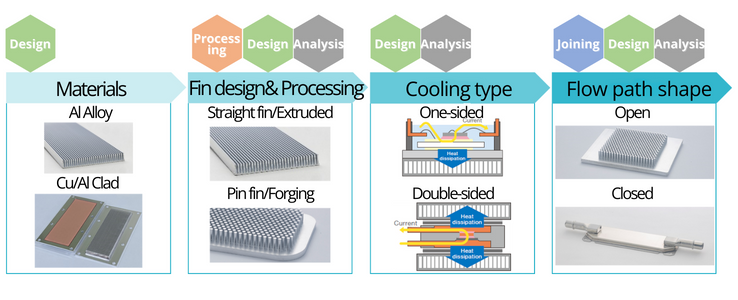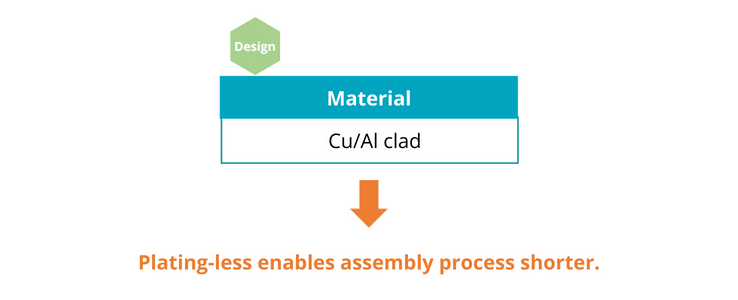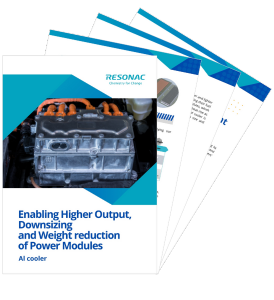- Category:
- Tag:
Applicable Business AreasxEV Tier1 (inverter makers) and Tier2 (power module makers)
Target ApplicationsCooler for xEV inverters’ power modules
Applicable Business AreasxEV Tier1 (inverter makers) and Tier2 (power module makers)
Target ApplicationsCooler for xEV inverters’ power modules

xEVs’ inverters are being improved to achieve higher output with a smaller and lighter system for the purpose of extending vehicles’ driving range while increasing their fuel efficiency or electric mileage. Among the inverter components, power modules, which heat up when driving, require particularly effective cooling to counter the heat rise as the inverter’s output increases. This is why improving the performance of cooler is crucial, although it must be balanced with the demand for reducing its size and weight.
Resonac solves the challenges involved in cooling power modules by combining its design and analysis technologies, taking advantage of its aluminum(Al) materials and processing and joining technologies to offer proposals that meet our customers’ specifications.
Technology supporting Resonac’s Al cooler

Following are examples of Resonac’s technologies supporting proposals for a cooler attaching to power modules.
Undertake development and casting of Al alloy. In addition to standardized materials, originally developed alloy compositions are available. We also propose Cu/Al clads to make use of Al’s lightness while achieving high heat dissipation.
Based on performance simulations, fins are designed to realize high heat dissipation and low pressure drop. The optimal processing method is chosen from pressing, extrusion and forging.
Cooling structures are designed by balancing multiple requirements, including cooling performance, size and weight. In addition to conventional furnace brazing, we use other joining methods less affectable the impact of heat on components assembled into the cooler. Resonac also analyzes and evaluates power modules to offer proposals that meet our customers’ specifications.
Along with the technologies described above, we also apply our technologies and knowhow accumulated through practical experience to propose coolers that satisfy our customers’ requirements.

Followings are proposal examples for coolers that contribute to resolving our customers’ problems.
Cu heatsinks excel in heat dissipation, but reducing weight is difficult.

Thermal resistance simulations were run using a Cu heatsink for comparison. Thermal resistance was lowered by replacing the heatsink base with a Cu/Al clad from Al, and thermal resistance equivalent to the Cu heatsink was made possible by narrowing the pitch of AI fins(Fig.1). It was also revealed that its weight could be reduced to about one-third to one-half of the Cu heatsink(Fig.2).
Appearance of “Cu/Al clad x narrow pitch Al fins”

Fig1. Simulation results of thermal resistance

Fig2. Simulation results of weight

Adopting an open heatsink for a liquid cooling system requires the attachment of flow paths by screw fastening. In such a structure, the heatsink’s size constitutes a challenge in making the power module smaller.

Narrow pitch Al fins are attached to a Cu/Al clad base to achieve the optimal balance between heat dissipation per unit area and pressure drop. By adopting a closed structure, the cooler can be made the same size as the power module, contributing to reducing the overall size of the inverter.
Diagram of Downsizing by a closed cooler structure

Cu heatsinks require corrosion-resistant plating, making it difficult to guarantee their quality due to the complex process of evenly plating fins.

Cu on mounting surface and fins are made of Al. Since the part exposed to the cooling liquid is Al, there is no corrosion risk or need for plating. Compared with Cu heatsinks, the assembly process becomes shorter.
Update date: 22th March, 2024

Contact Us
Please don't hesitate to contact us if you have any questions.